Analysis and Design of Broadband Simultaneous Wireless Information and Power Transfer (SWIPT) System Considering Rectifier Effect
Abstract
1. Introduction
2. Problem Statement
3. SWIPT System Design
3.1. A SWIPT System Using Two Dipoles and a Narrow Band Rectifier
4. Component Design
4.1. Rectifier Circuit
4.2. Transmitter (TX) Antenna
4.3. Receiver (RX) Antenna
5. Proposed Broadband SWIPT Setup
5.1. A SWIPT System Using Two Broadband Antennas
5.2. A SWIPT System Using Two Broadband Antennas and a Narrowband Rectifier
5.3. A SWIPT System Using Two Broadband Antennas and a Broadband Rectifier
6. Conclusions
Author Contributions
Funding
Conflicts of Interest
References
- Perera, T.D.P.; Jayakody, D.N.K.; Sharma, S.K.; Chatzinotas, S.; Li, J. Simultaneous Wireless Information and Power Transfer (SWIPT): Recent Advances and Future Challenges. IEEE Commun. Surv. Tutor. 2017, 20, 264–302. [Google Scholar] [CrossRef]
- Xu, Y.; Ding, Z.; Sun, X.; Yan, S.; Zhu, G.; Zhong, Z. Joint Beamforming and Power-Splitting Control in Downlink Cooperative SWIPT NOMA Systems. IEEE Trans. Signal Process. 2017, 65, 4874–4886. [Google Scholar] [CrossRef]
- Boshkovska, E.; Kwan Ng, D.W.; Zlatanov, N.; Schober, R. Practical Non-Linear Energy Harvesting Model and Resource Allocation for SWIPT systems. IEEE Commun. Lett. 2015, 19, 2082–2085. [Google Scholar] [CrossRef]
- Yao, Y.; Wu, J.; Shi, Y.; Dai, F.F. A fully integrated 900-MHz passive RFID transponder front end with novel zero-threshold RF-DC rectifier. IEEE Trans. Ind. Electron. 2009, 56, 2317–2325. [Google Scholar] [CrossRef]
- Kim, Y.; Lee, T.J.; Kim, D.I. Joint Information and Power Transfer in SWIPT-enabled CRFID Networks. IEEE Wirel. Commun. Lett. 2017, 2337, 186–189. [Google Scholar] [CrossRef]
- Popovic, Z.; Falkenstein, E.A.; Costinett, D.; Zane, R. Low-power far-field wireless powering for wireless sensors. Proc. IEEE 2013, 101, 1397–1409. [Google Scholar] [CrossRef]
- Nishimoto, H.; Kawahara, Y.; Asami, T. Prototype implementation of ambient RF energy harvesting wireless sensor networks: A review. Renew. Sustain. Energy Rev. 2015, 45, 769–784. [Google Scholar] [CrossRef]
- Akyildiz, I.F.; Melodia, T.; Chowdhury, K.R. A survey on wireless multimedia sensor networks. Comput. Netw. 2007, 51, 921–960. [Google Scholar] [CrossRef]
- Kim, S.; Vyas, R.; Bito, J.; Niotaki, K.; Collado, A.; Gerogiadis, A.; Tentzris, M.M. Ambient RF energy-harvesting technologies for self-sustainable standalone wireless sensor platforms. Proc. IEEE 2014, 102, 1649–1666. [Google Scholar] [CrossRef]
- Chen, H.H.; Li, Y.; Jiang, Y.; Ma, Y.; Vucetic, B. Distributed Power Spilitting for SWIPT in Relay Interference Channels Using Game Theory. IEEE Trans. Wirel. Commun. 2015, 14, 410–420. [Google Scholar] [CrossRef]
- Zhang, J.; Yuen, C.; Wen, C.K.; Jin, S.; Wong, K.K.; Zhu, H. Large system secrecy rate analysis for SWIPT MIMO wiretap channels. IEEE Trans. Inf. Forensics Secur. 2016, 11, 74–85. [Google Scholar] [CrossRef]
- Zhang, R.; Ho, C.K. MIMO broadcasting for simultaneous wireless information and power transfer. IEEE Trans. Wirel. Commun. 2013, 12, 1989–2001. [Google Scholar] [CrossRef]
- Krikidis, I.; Sasaki, S.; Timotheou, S.; Ding, Z. A low complexity antenna switching for joint wireless information and energy transfer in MIMO relay channels. IEEE Trans. Commun. 2014, 62, 1577–1587. [Google Scholar] [CrossRef]
- Zhou, X.; Zhang, R.; Ho, C.K. Wireless Information and Power Transfer: Architecture Design and Rate-Energy Tradeoff. IEEE Trans. Commun. 2013, 61, 4754–4767. [Google Scholar] [CrossRef]
- Caspers, E.P.; Yeung, S.H.; Sarkar, T.K.; Lamperez, A.G. Analysis of Information and Power Transfer in Wireless Communications. IEEE Antenna Propag. Mag. 2013, 55, 82–95. [Google Scholar] [CrossRef]
- Yeung, S.H.; Sarkar, T.K.; Salazar-Palma, M.; Lagunas, M.A.; Perez-Neira, A.I. Broadband Matching in Simultaneous Information and Power Transfer. IEEE Antenna Propag. Mag. 2015, 57, 192–203. [Google Scholar] [CrossRef]
- Krikidis, I.; Timotheou, S.; Nikolaou, S.; Zheng, G.; Ng, D.W.K.; Schober, R. Simultaneous Wireless Information and Power Transfer in modern communication systems. IEEE Commun. Mag. 2014, 52, 104–110. [Google Scholar] [CrossRef]
- Liu, L.; Zhang, R.; Chua, K.C. Wireless Information and Power Transfer: A Dynamic Power Splitting Approach. IEEE Trans. Commun. 2013, 61, 3990–4001. [Google Scholar] [CrossRef]
- Forney, G.D.; Ungerboeck, G. Modulation and Coding for Linear Gaussian Channels. IEEE Trans. Inf. Theory 1998, 44, 1807–1813. [Google Scholar] [CrossRef]
- Wolf, M.; Cheema, S.A.; Haardt, M. PAM-transmission with optimal detection for dispersive optical channels with intensity modulation and direct detection. In Proceedings of the Transparent Optical Networks (ICTON), Girona, Spain, 2–6 July 2017. [Google Scholar] [CrossRef]
- Shannon, C.E. Communication in the Presence of Noise. Proc. IEEE 1998, 68, 447–457. [Google Scholar] [CrossRef]
- HSMS-285x Surface Mount RF Schottky Barrier Diodes, Data Sheet; Avago Technologies: San Jose, CA, USA, 2004.
- Linear Models for Diode Surface Mount Packages, Application Note 1124; Hewlett Packard: Palo Alto, CA, USA, 1997.
- Nimo, A.; Grgić, D.; Reindl, L.M. Optimization of Passive Low Power Wireless Electromagnetic Energy Harvesters. Sensors 2012, 12, 13636–13663. [Google Scholar] [CrossRef] [PubMed]
- Maas, S.A. Nonlinear Microwave and RF Circuits, 2nd ed.; Artech House: Londan, UK, 2003; pp. 115–211. ISBN 978–1580534840. [Google Scholar]
- Visser, H.J.; Keyrouz, S.; Smolders, A.B. Optimized rectenna design. Wirel. Power Transf. 2012, 2, 44–50. [Google Scholar] [CrossRef]
- Sze, J.Y.; Chang, C.C. Circularly polarized square slot antenna with a pair of inverted-L grounded strips. IEEE Antennas Wirel. Propag. Lett. 2008, 7, 149–151. [Google Scholar] [CrossRef]
- Chen, Y.B.; Liu, X.F.; Jiao, Y.C.; Zhang, F.S.; Edition, S. CPW-fed broadband circularly polarised square slot antenna. Electron. Lett. 2006, 42, 1074–1075. [Google Scholar] [CrossRef]
- Pan, S.P.; Sze, J.Y.; Tu, P.J. Circularly polarized square slot antenna with a largely enhanced axial-ratio bandwidth. IEEE Antennas Wirel. Propag. Lett. 2012, 11, 969–972. [Google Scholar] [CrossRef]
- Allen, B.; Dohler, M.; Okan, E.E.; Malik, W.Q.; Brown, A.K.; Edwards, D.J.; Adatia, N. Theory of UWB Antenna Elements. In Ultra-Wideband Antennas and Propagation for Communication, Radar and Imaging; Wiley: London, UK, 2007; ISBN 978–0-470-03255-8. [Google Scholar]
- Ding, W.; Liu, S.; Zhan, B.; Wang, G. A miniaturized ultra-wideband CPW-fed antenna. In Proceedings of the 2015 IEEE MTT-S International Conference on Numerical Electromagnetic and Multiphysics Modeling and Optimization (NEMO), Ottawa, ON, Canada, 11–14 August 2015. [Google Scholar] [CrossRef]
- Fereidoony, F.; Chamaani, S.; Mirtaheri, S.A. Systematic Design of UWB Monopole Antennas with Stable Omnidirectional Radiation Pattern. IEEE Antenna Wirel. Propag. Lett. 2015, 11, 725–755. [Google Scholar] [CrossRef]
- De Donno, D.; Catarinucci, L.; Tarricone, L. An UHF RFID energy-harvesting system enhanced by a DC-DC charge pump in silicon-on-insulator technology. IEEE Microw. Wirel. Compon. Lett. 2013, 23, 315–317. [Google Scholar] [CrossRef]
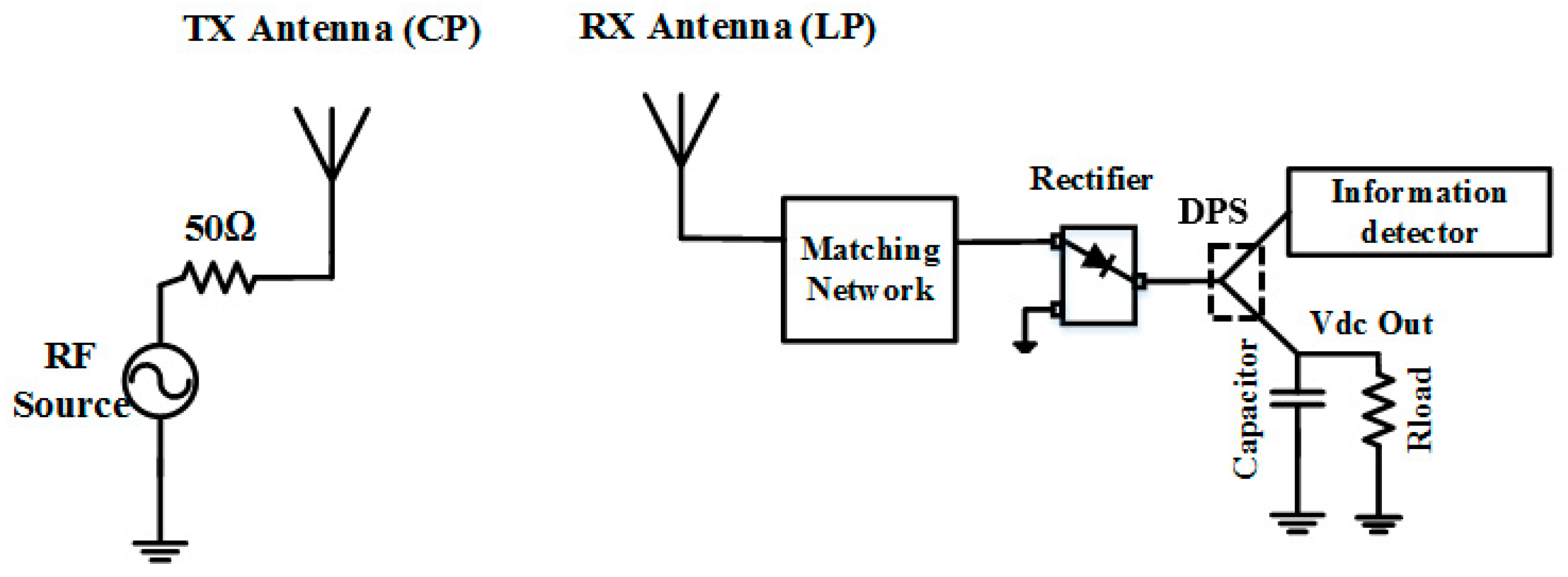


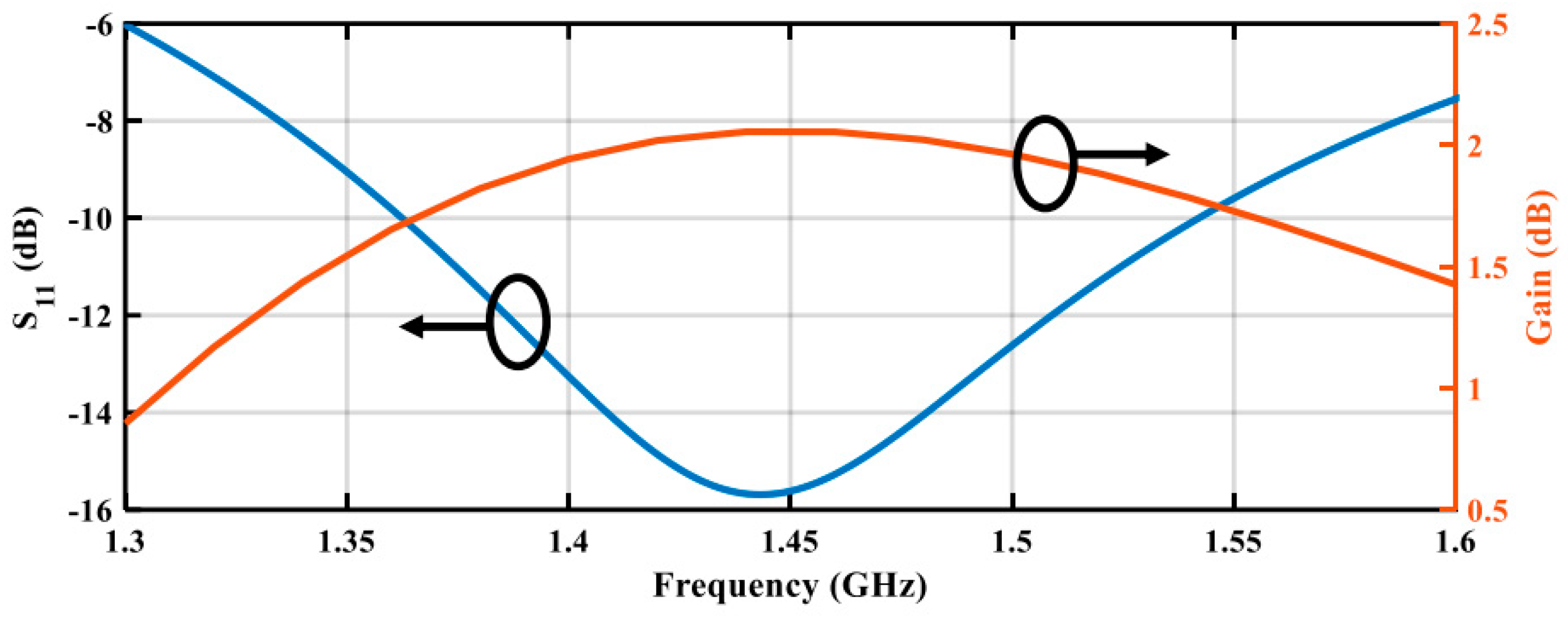
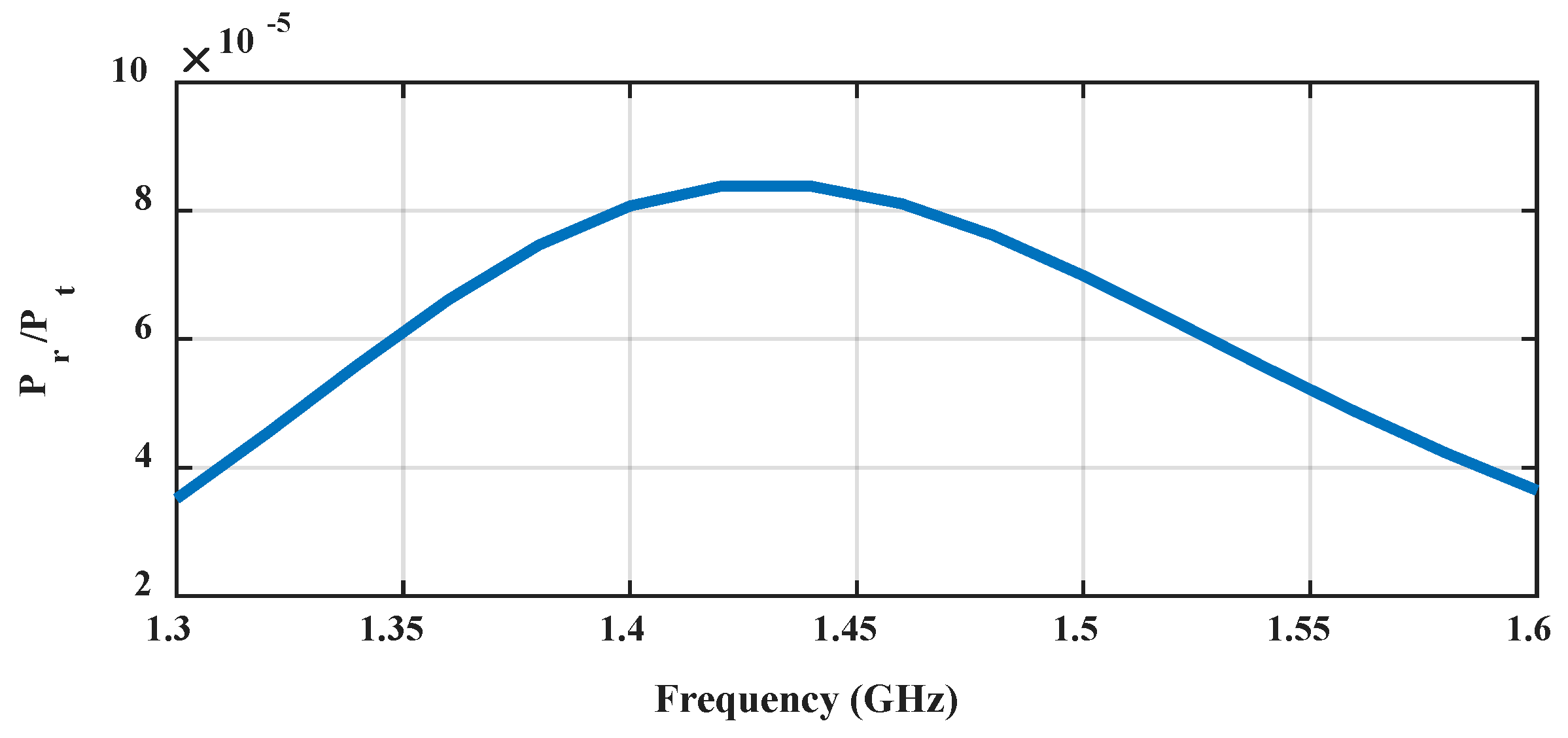

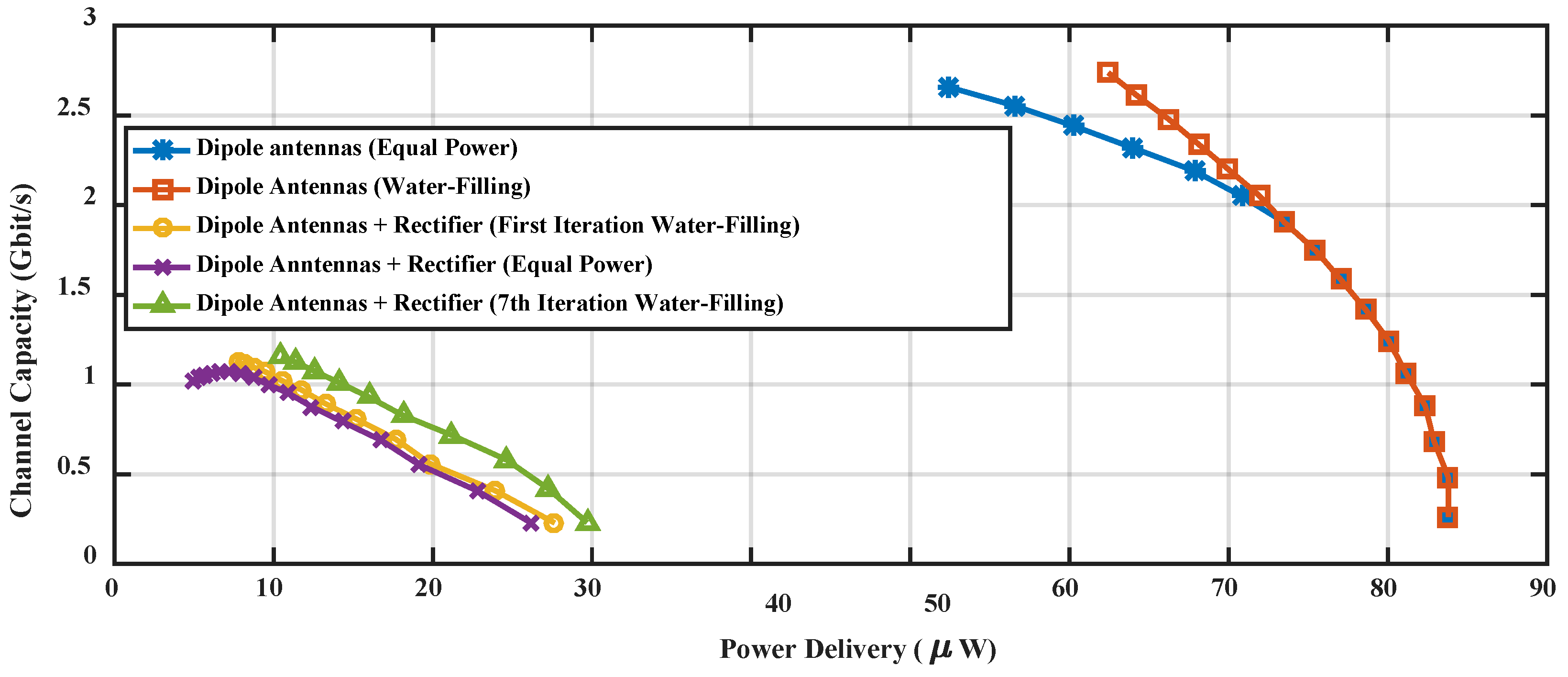
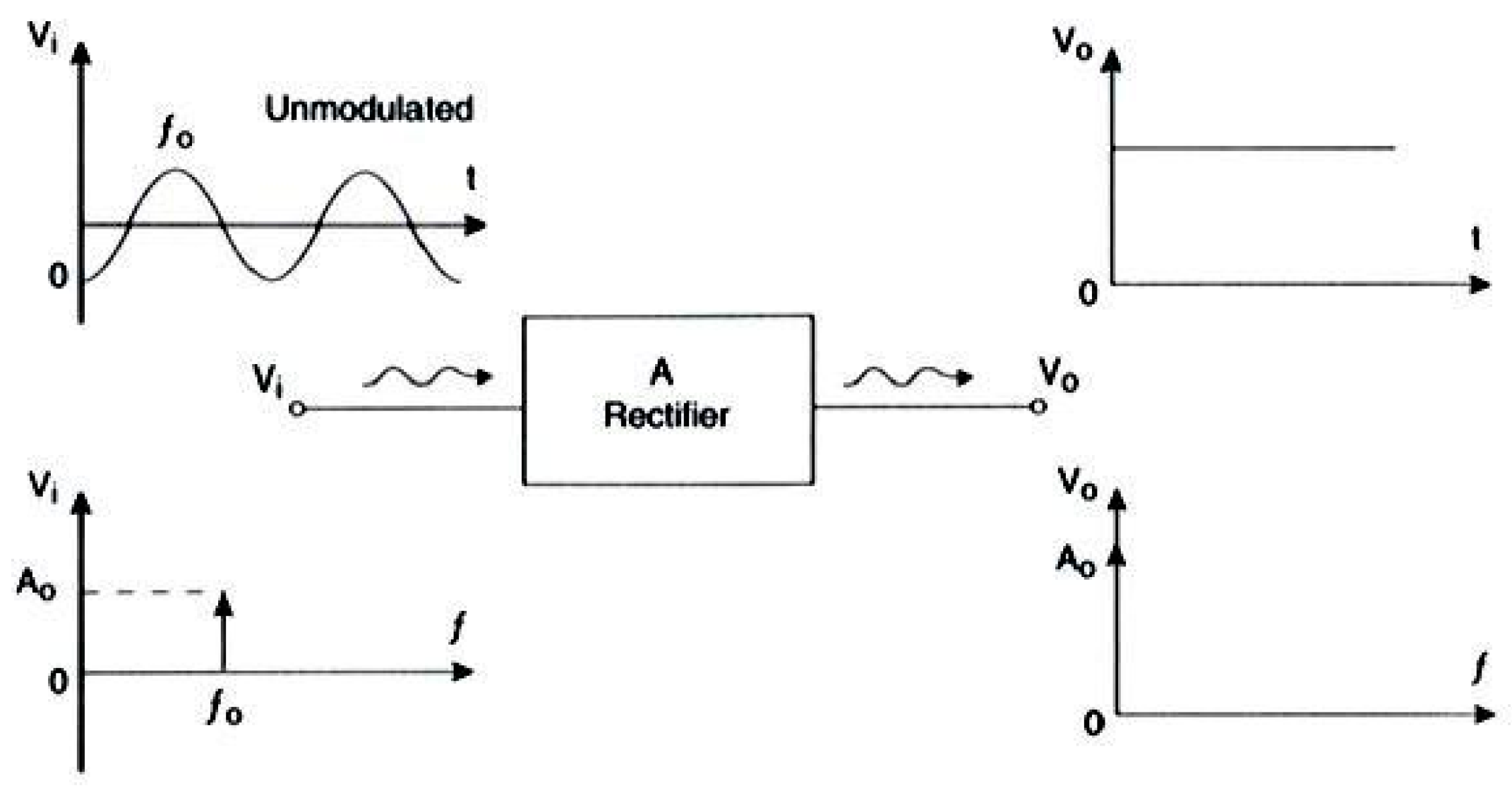




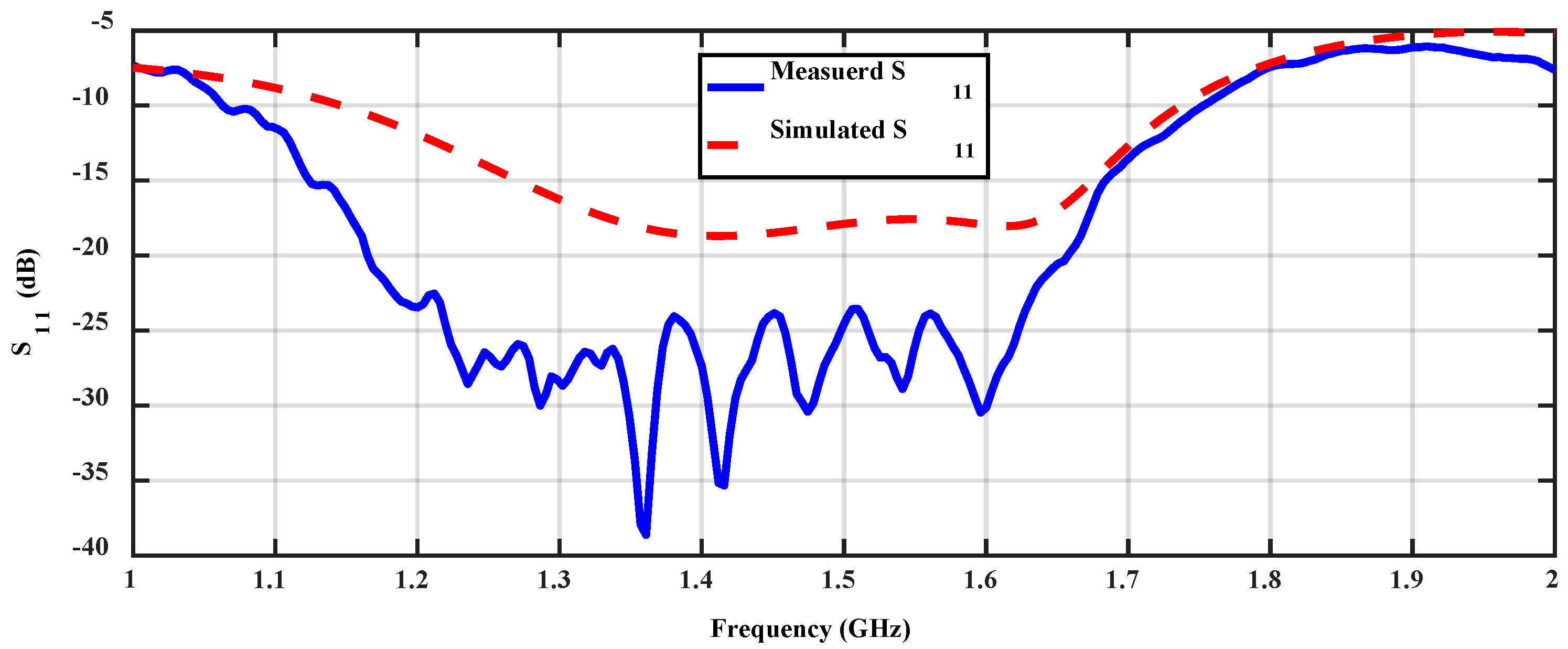
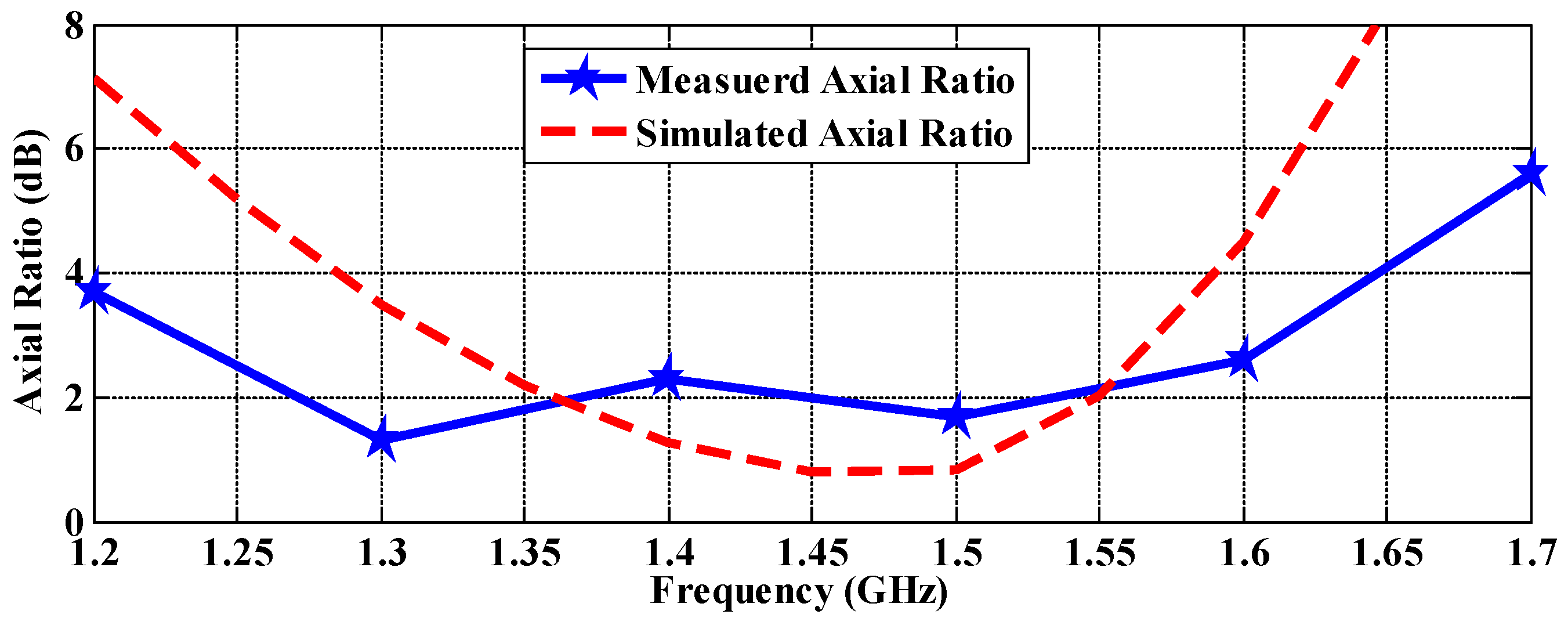
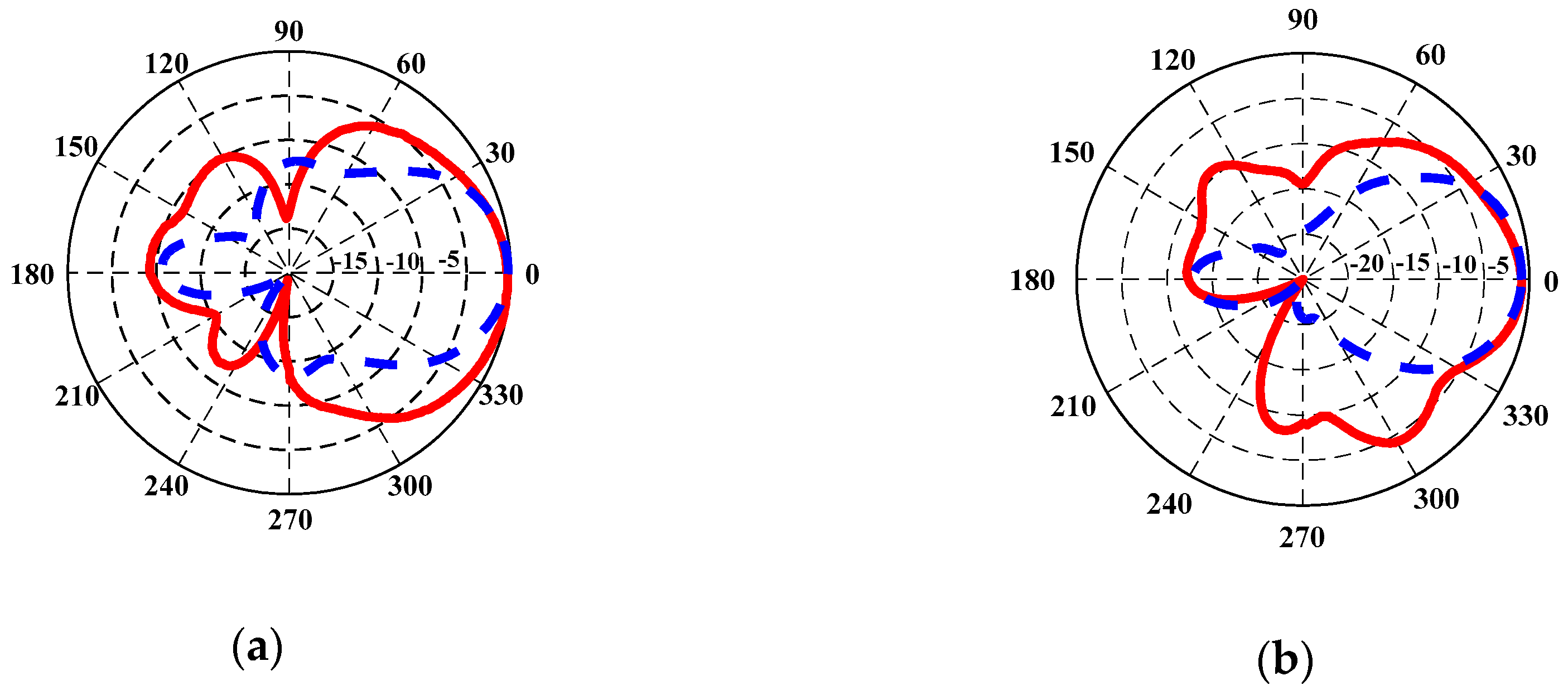
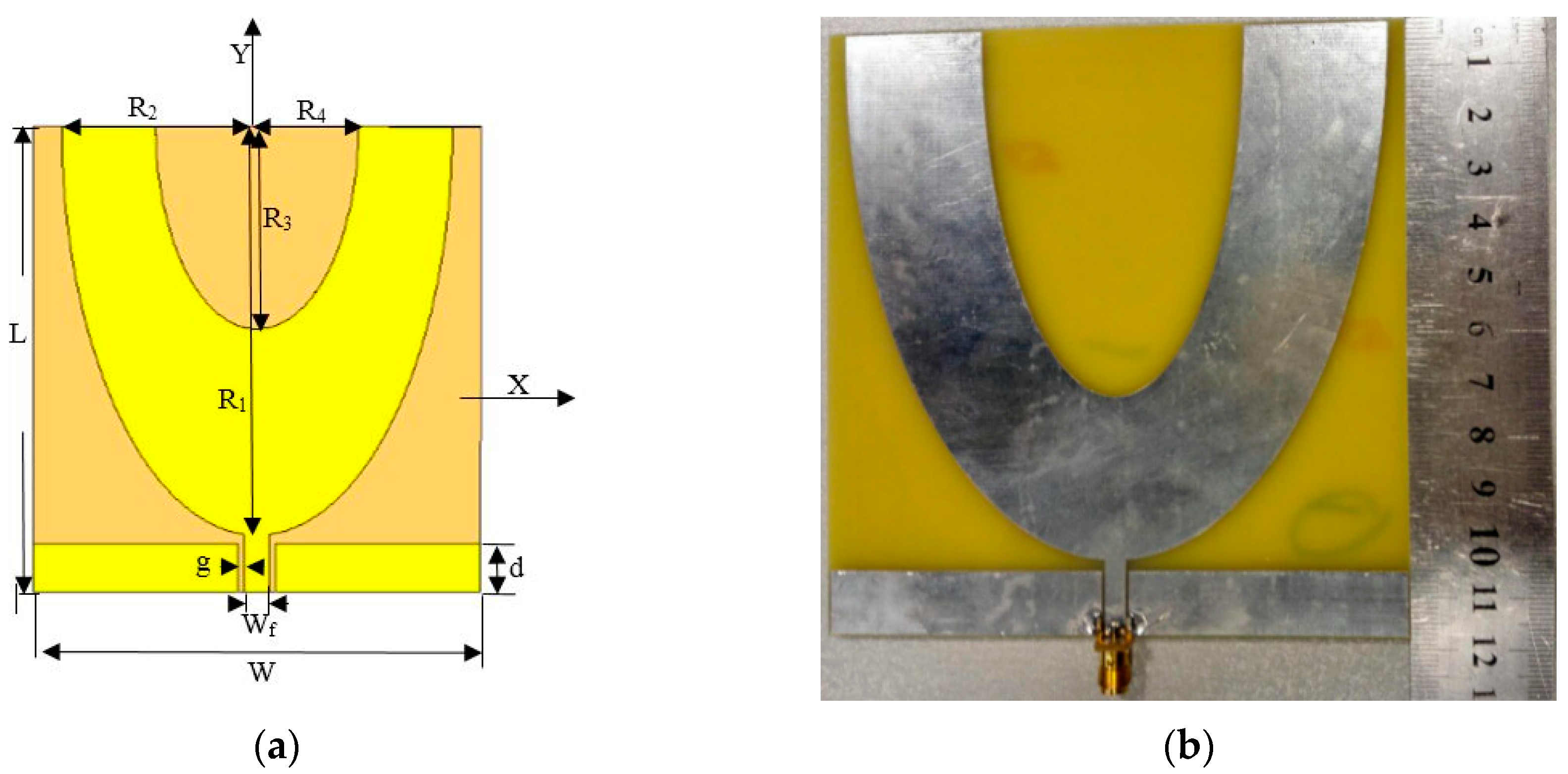

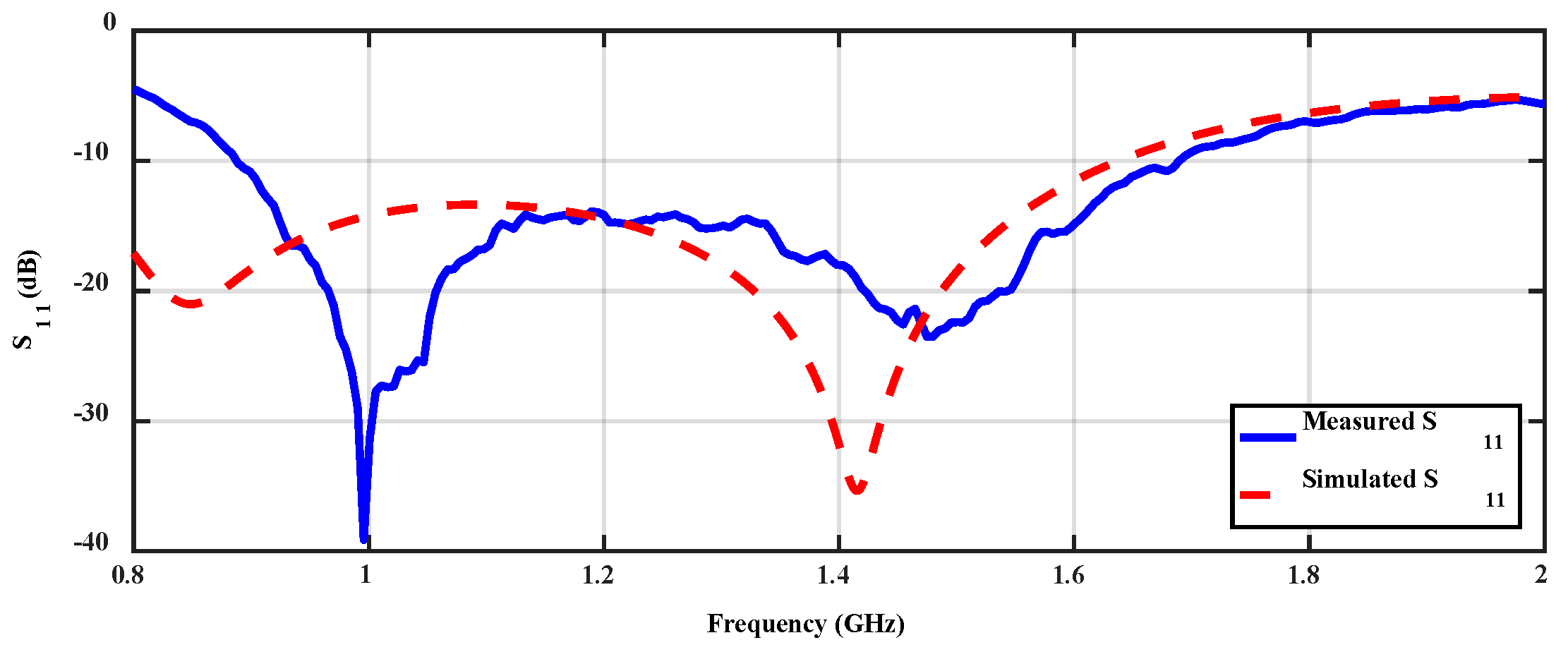

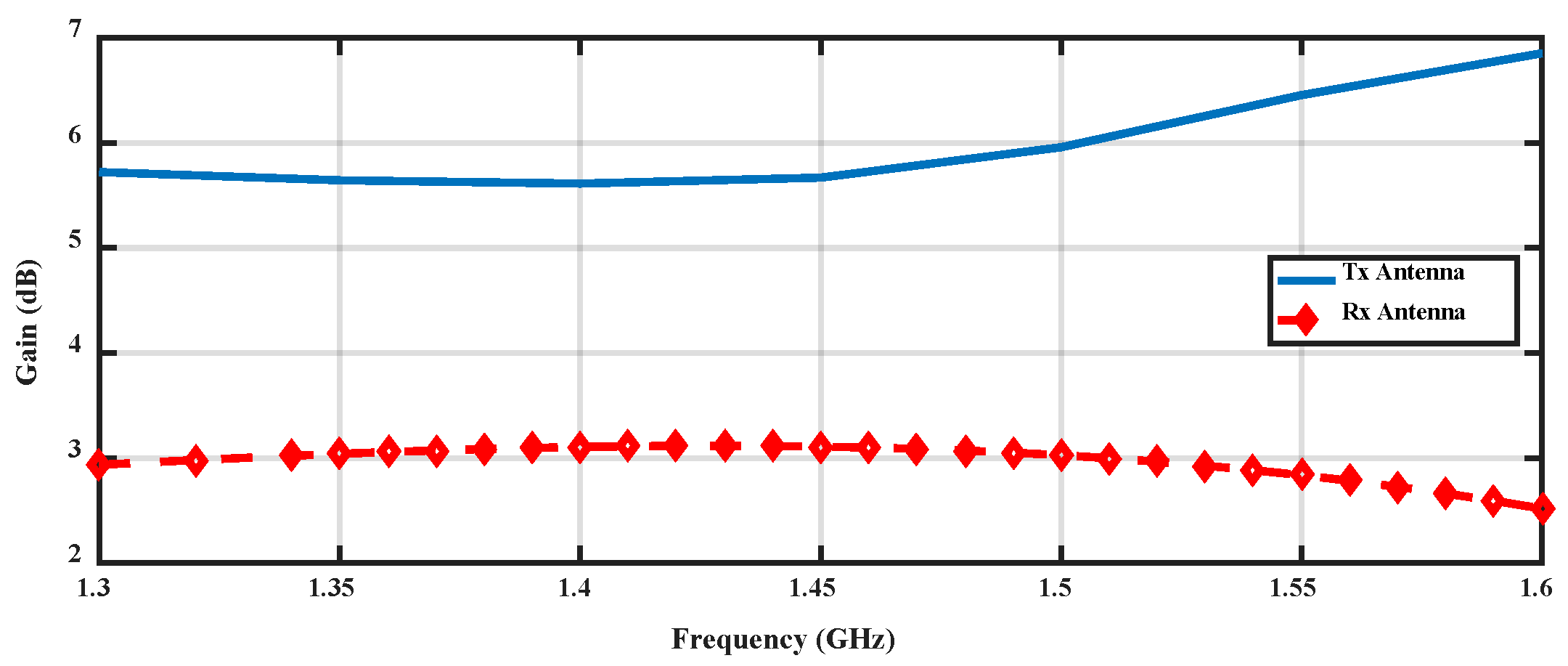
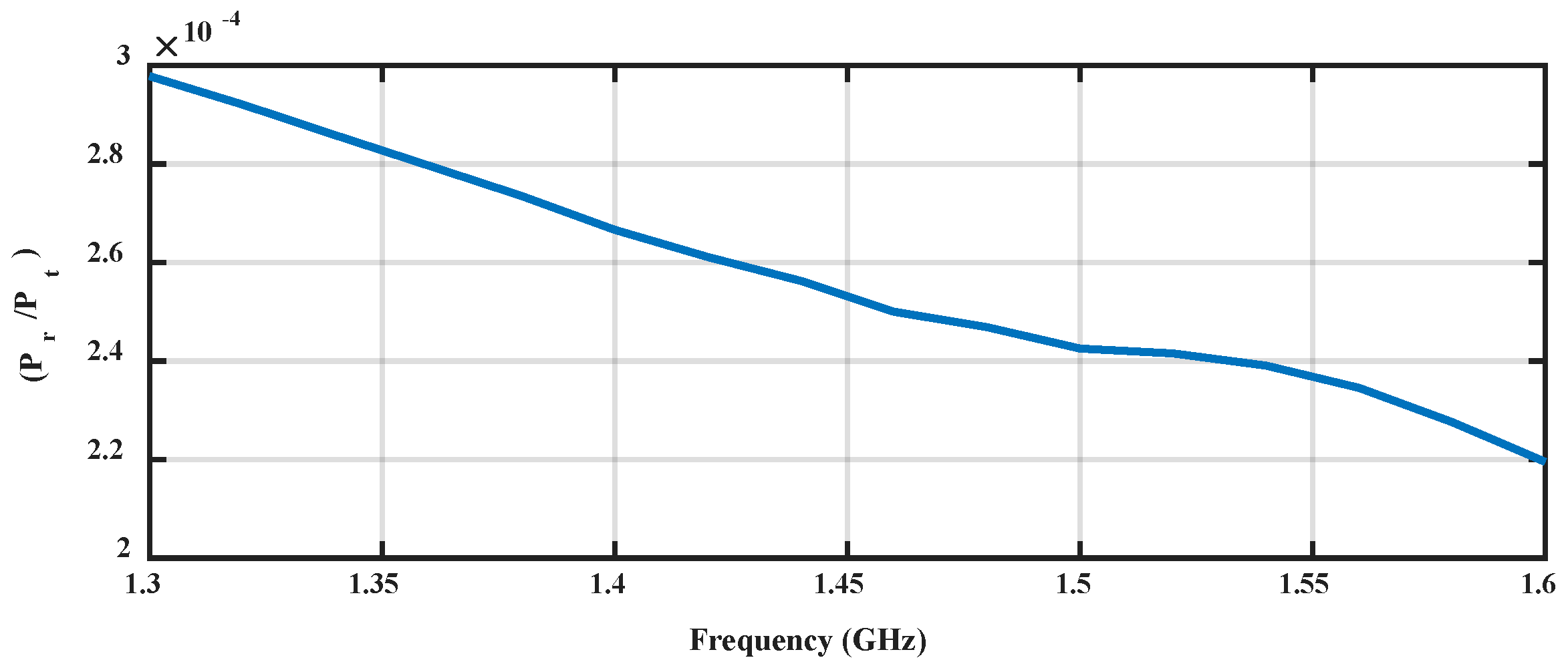

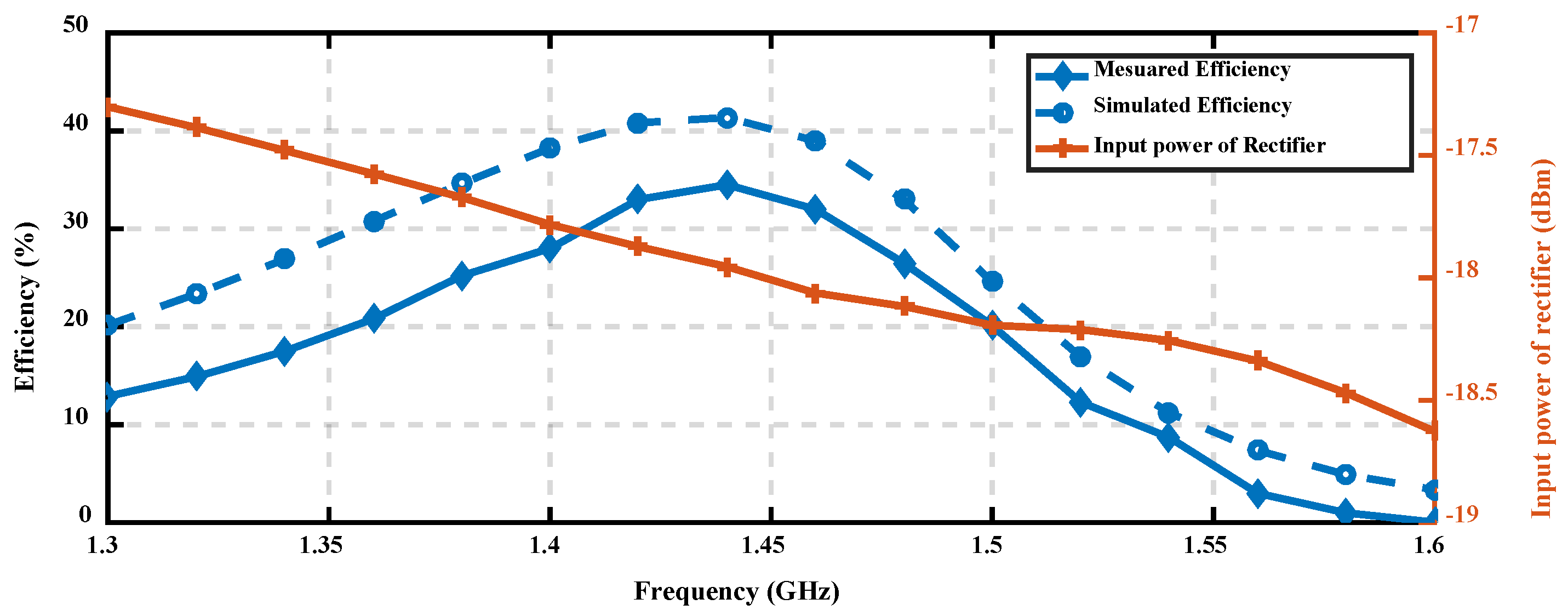

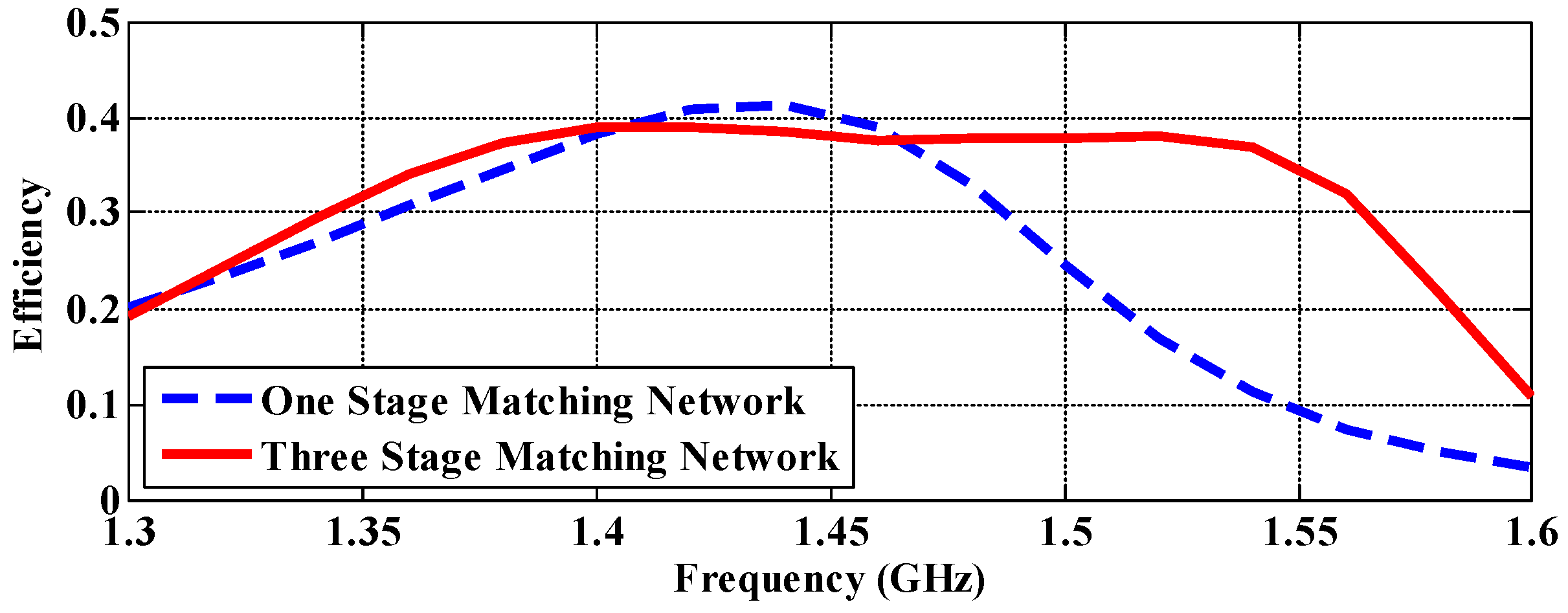

| Element | ||||
|---|---|---|---|---|
| Value |
| G | L | L1 | L2 | L3 | L4 | Wf | g | WP | LP | S1 | S2 | GL | H | Wr |
|---|---|---|---|---|---|---|---|---|---|---|---|---|---|---|
| 100 | 60 | 26.5 | 20 | 18 | 22 | 5 | 0.5 | 23 | 46 | 1 | 15 | 140 | 50 | 15 |
| L | W | Wf | g | d | R1 | R2 | R3 | R4 |
|---|---|---|---|---|---|---|---|---|
| 115 | 110 | 4 | 0.5 | 10 | 101 | 52 | 70 | 25 |
| RL | C1 | L1 | L2 | L3 | L4 | C2 | C3 |
|---|---|---|---|---|---|---|---|
| 100 (pF) | 22 (nH) | 2.53 (nH) | 4.5 (nH) | 2.2 (nH) | 7.34 (pF) | 2.27 (pF) |
© 2018 by the authors. Licensee MDPI, Basel, Switzerland. This article is an open access article distributed under the terms and conditions of the Creative Commons Attribution (CC BY) license (http://creativecommons.org/licenses/by/4.0/).
Share and Cite
Shirichian, M.; Chamaani, S.; Akbarpour, A.; Del Galdo, G. Analysis and Design of Broadband Simultaneous Wireless Information and Power Transfer (SWIPT) System Considering Rectifier Effect. Energies 2018, 11, 2387. https://doi.org/10.3390/en11092387
Shirichian M, Chamaani S, Akbarpour A, Del Galdo G. Analysis and Design of Broadband Simultaneous Wireless Information and Power Transfer (SWIPT) System Considering Rectifier Effect. Energies. 2018; 11(9):2387. https://doi.org/10.3390/en11092387
Chicago/Turabian StyleShirichian, Mehdi, Somayyeh Chamaani, Alireza Akbarpour, and Giovanni Del Galdo. 2018. "Analysis and Design of Broadband Simultaneous Wireless Information and Power Transfer (SWIPT) System Considering Rectifier Effect" Energies 11, no. 9: 2387. https://doi.org/10.3390/en11092387
APA StyleShirichian, M., Chamaani, S., Akbarpour, A., & Del Galdo, G. (2018). Analysis and Design of Broadband Simultaneous Wireless Information and Power Transfer (SWIPT) System Considering Rectifier Effect. Energies, 11(9), 2387. https://doi.org/10.3390/en11092387






